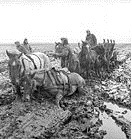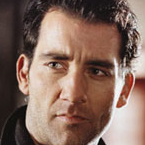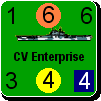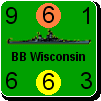Shannon V. OKeets
Posts: 22095
Joined: 5/19/2005
From: Honolulu, Hawaii
Status: offline

|
quote:
ORIGINAL: Perelandra67
I just bought this game yesterday, setting up my first game. So there's a good chance I'm missing something here.
In setting up the Russians I couldn't help but notice that the OOB seems to be way off. Just one example: 51st Army is scheduled to set up in Asia/Central Pacific, when it is clear it was deployed in the Crimea. Seems to be other inaccuracies as well.
Call me "WW2 OOB OCD" but this kind of stuff is important to me. Any thoughts? Has anyone set up Barbarossa or Lebensraum according to actual OOB's?
World in Flames from its inception as a board game in 1985 did something quite different as to OOB. Rather than have exactly the same units set up in precisely the same locations as they did historically, the game randomly draws units from a "force pool". So there might be, say, 20 infantry armies in the force pool, and a major power would get 12 of them for placement on the map at the start of the game. Which ones you get is random. The starting locations can range from specific hexes to a broad swathe of territory (e.g., any hex in Siberia).
As the game progresses, each major power gets to build units, which are again drawn randomly from those in its force pool. If you build all of one type (e.g., HQs) then you can pay extra to "build ahead: one or more years. Units which are destroyed, go back into the force pool and can be built again. This is more or less what happened in Russia, where individually named units were destroyed early in the war and the unit designations were used over and over again for brand new units built later in the war.
So, you are not going to see the same set up each time you start a game. Indeed, the players will have a lot of latitude on where they place units on the map initially. The USSR usually decides whether to set up its units for an attack on Rumania, Finland, or Persia. There are only enough units to take on one of those minor countries at a time. Merely threatening to attack Rumania might cause Germany to 'give' the USSR Bessarabia. Then the USSR redeploys its units to the north and tries to accomplish the same feat with Finland. If the USSR wants Persia, then it will have to declare war. But the other two minor countries can have portions of the territory 'claimed' by the USSR.
I could go on and on with examples of how WIF differs from historical events. But the gist of the game is that each major power has capabilities (units and resources and factories) roughly comparable to those the actual major power had at the start of the war. It is up to the players to follow historical events or not.
_____________________________
Steve
Perfection is an elusive goal.
|
 Printable Version
Printable Version




















 New Messages
New Messages No New Messages
No New Messages Hot Topic w/ New Messages
Hot Topic w/ New Messages Hot Topic w/o New Messages
Hot Topic w/o New Messages Locked w/ New Messages
Locked w/ New Messages Locked w/o New Messages
Locked w/o New Messages Post New Thread
Post New Thread